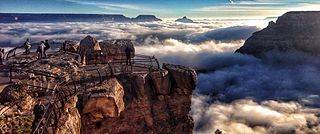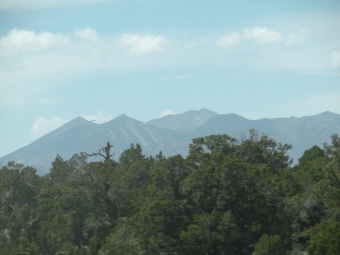Living in a location considered by many reliable sources to have America’s worst particulate matter pollution – that’d be California’s expansive San Joaquin Valley with roughly 4 million residents, 2 million motor vehicles and which accounts for half the state’s yearly agricultural production sales dollars – literally and figuratively taking “a breather” from any number of the area’s air-damaging sources – both mobile and non-mobile sources of air pollution alike – by traveling to distant places where one can find cleaner air, is something that I most look forward to when the opportunity presents itself, even if it is for but a day.
![320px-WilliamsDepot_WilliamsAZ[1]](https://alankandel.scienceblog.com/files/2013/02/320px-WilliamsDepot_WilliamsAZ1-300x200.jpg)
To get to and from, I drove from Fresno (my current residence) to the canyon’s south rim is, one way, a roughly 572-mile drive. If you’re interested in knowing the route taken, it is a fairly straightforward trek. California State Route (SR) 99 south to Bakersfield; SR 58 east to Barstow; east on Interstate 40 to Williams, Arizona and Arizona SR 64 north to the Grand Canyon itself. It’s a long haul and consumes the better part of a day driving.
If one were to make the trip today, one highly suitable alternative would be to do that in a more eco-friendly fashion, meaning leaving far less of a carbon footprint than what I did in making my 1980s trip. This could include driving in a hybrid or fully electric vehicle (provided the necessary charging stations to do so can be reached when needed so as not to deplete the battery charge before the next charging station can be reached and the vehicle doesn’t run out of juice en route). A train trip to and from the lip of the canyon embarking at the Grand Canyon Railway’s historic Williams, Arizona depot, a 130-mile roundtrip journey in all, is available also, if one has the inclination to do this.


Side trips, meanwhile, to nearby located attractions such as Flagstaff and Sedona, for instance, can be easily had. For those with an affinity for transportation history, historic Route 66 courses through Flagstaff and Williams both.
That trip to the South Rim of the Grand Canyon is one that I’ll not soon forget. It is definitely worth doing a similar sojourn again. Provided I did, there would be one major difference this time around: I would take the train. The train, by the way, offers views and on-board experiences that the highway via automobile travel just does not.
Getting away from the San Joaquin Valley’s down low and dirty air when I can is a given. From my standpoint and regarding the place where I hang my hat, that doesn’t happen nearly enough. Taking a different view, the Valley should do all within its power to clean up its air act. Should that ever become reality, then maybe I would not feel the need to seek out distant vistas where one can actually see the sights rather than their being obscured much of the time on account of bad air. The choice for me at least, is clear, even if the air always isn’t.
Middle image above: Erin Whittaker, U.S. National Park Service
– Alan Kandel